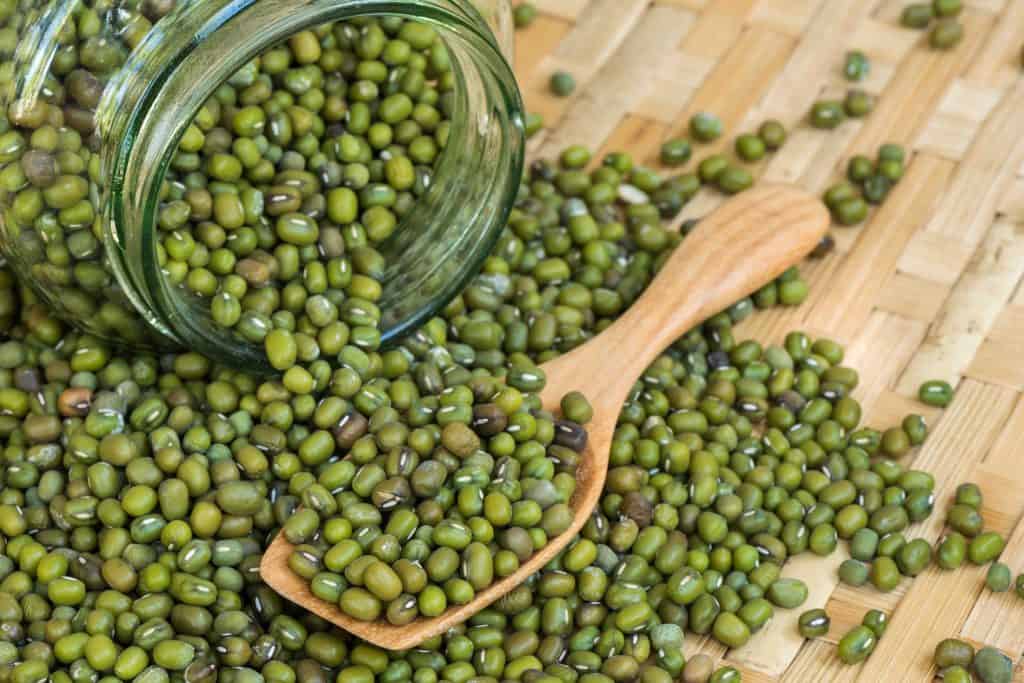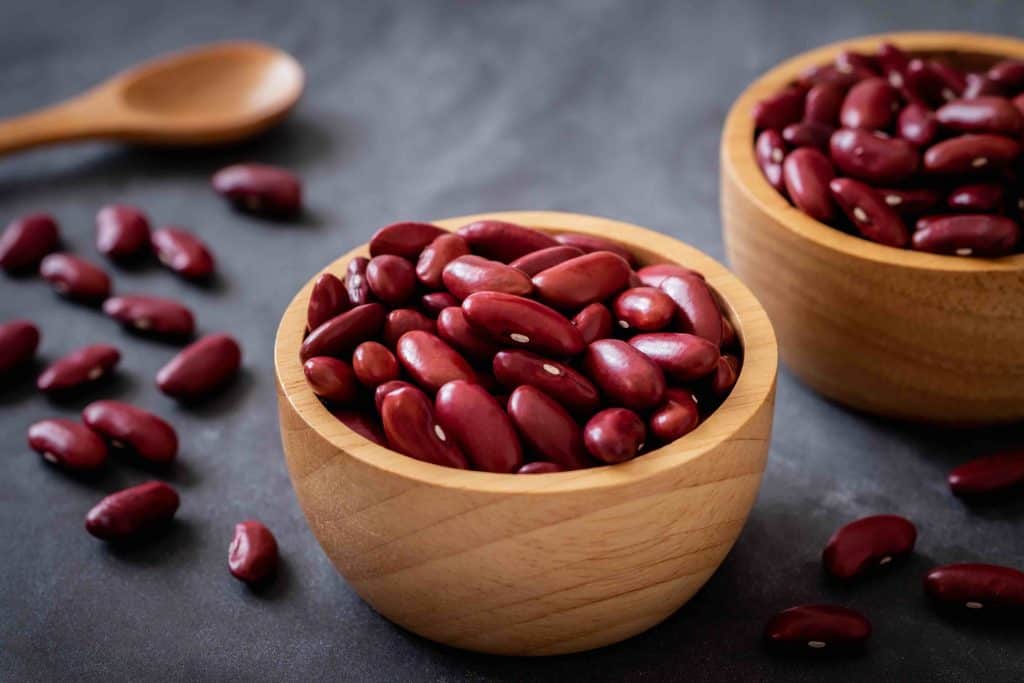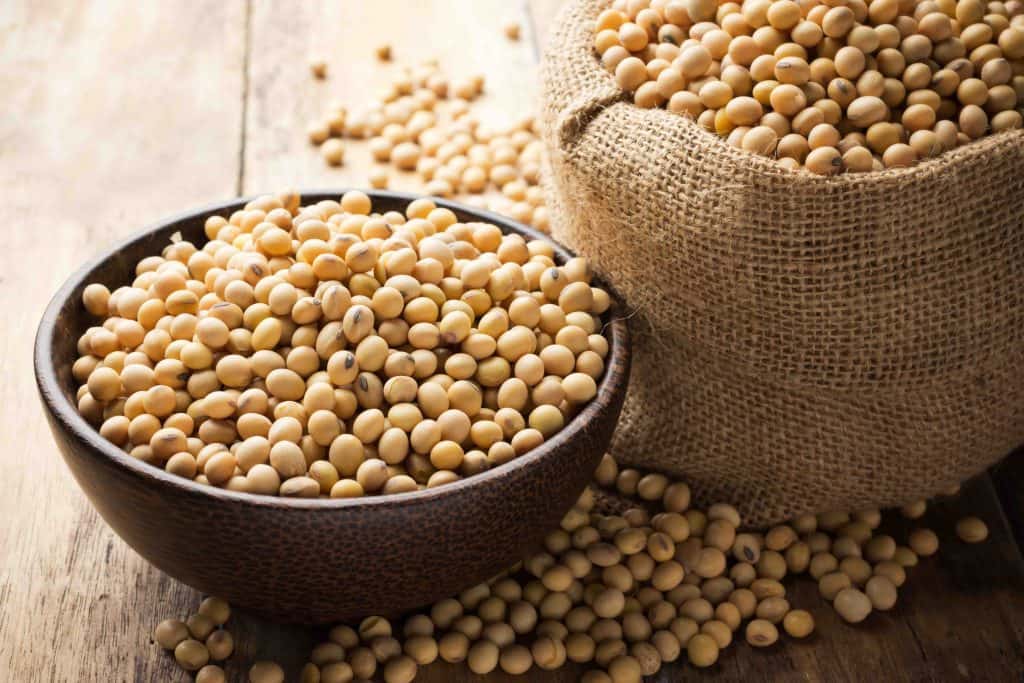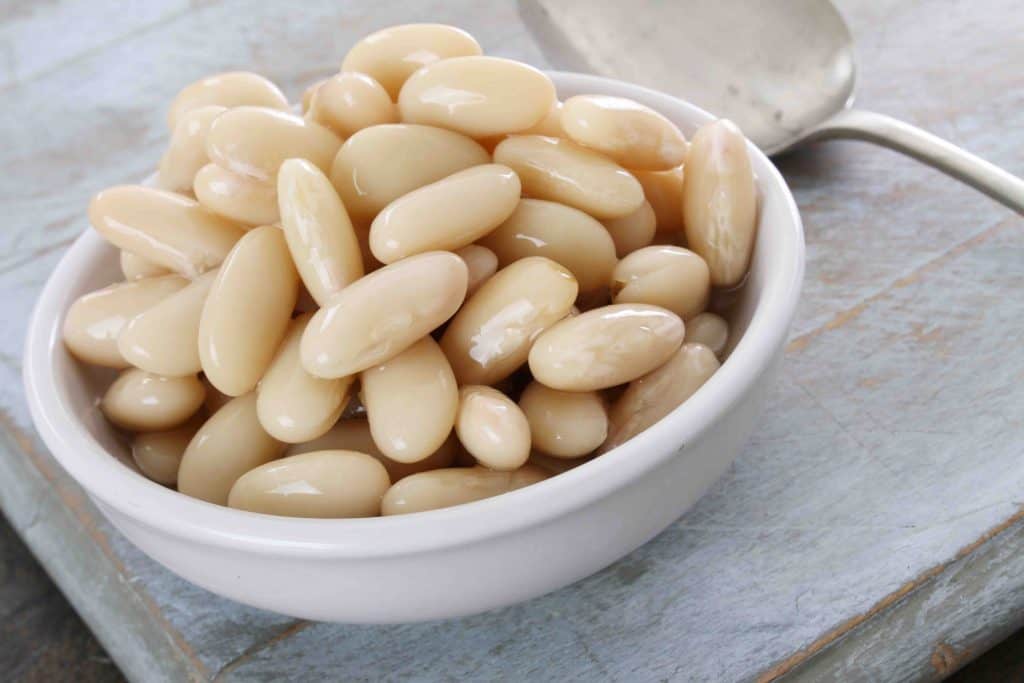
Are you familiar with the types of beans you encounter daily? Do you know which ones are safe for humans and which ones are best for animals? Did you know that there are types of beans you can plant in the comfort of your home? Worry no more! We prepared a simple crash course of 20 types of beans you need to know about.
Before we continue with our list, we just want to know if you’re aware of the importance of adding beans to your diet. Various types of beans contain dietary fiber, protein, and other essential vitamins and minerals. Some even aid in reducing your blood sugar while improving your digestion and cholesterol levels. Thanks to these properties, you can have a healthier stomach in no time. Read on and learn about the benefits of various types of beans and see which ones match your preferred diet.

1. Lima beans (Phaseolus lunatus)

Sometimes called butter beans, lima beans are known for being commonly consumed despite containing cyanide. However, the fatal poison is only present on the lima bean’s leaves. The bean itself is not harmful when consumed.
Lima Beans are one of the prized beans commonly produced and cultivated in Central and South America. In 800 BCE, the ancient Moche civilization from Peru usually served these large flat beans in most of their meals. Because of this, the beans were named after Lima, Peru’s capital city. Nowadays, we’re familiar with two types of lima beans that come in colors of cream and green.
Traditionally, people cooked lima beans that have been left to dry. Some seasoned chefs or home cooks still use the classic method while others prefer cooking fresh or frozen lima beans. No matter what method you try, the lima beans still maintain the nutrients that reduce the risks of cardiovascular disease or iron deficiency anemia. Simple dishes you can try out for yourself include spreads like hummus or soups like Salmon and Corn Chowder with Lima Beans.
You can plant lima beans in your garden by planting them in about 1 to 1 1/2 inches in deep warm soil. To make room for each plant’s growth, it’s best to plant them with a distance of about 2 feet in between each bean.
2. Pinto Beans or Carioca Beans (Phaseolus vulgaris)

One of the most common types of beans includes the speckled variation called pinto beans or carioca beans. It’s one of the most commonly used beans around Northern Mexico and the Southwestern United States. Because of this, you might unknowingly consume pinto beans cooked as part of fillings for tacos or burritos when you eat at Mexican restaurants.
Every 100-gram serving of pinto beans contains enough protein and minerals to boost your energy for the day. Thanks to its various antioxidants, those who regularly consume pinto beans have a lesser risk of suffering from a chronic disease. If you want to add these nutritious beans to your diet, you can start by pairing them with rice and ham to create a delicious Pinto Beans, Ham, and Rice meal.
You can grow pinto beans if your garden gets at least six hours of sun exposure. The plants only thrive in warm summers and grow well with cucumber or celery. If you think you can handle the heat, you can plant pinto beans in well-draining and fertile soil with minimal fertilizer.
3. Adzuki Beans (Vigna angularis)

Adzuki beans are one of the most beloved types of beans in East Asia and the Himalayas. People from these areas usually use and cook red adzuki beans for their meals. If you’re a fan of matcha, you might have tried sweetened red adzuki beans which are usually paired with the famous tea powder. Other variations of these beans come in black, white, gray, and speckled colors.
Adzuki beans are known to contain several types of antioxidants. This makes them one of the most important antioxidant-rich foods you can add to your diet. If you fell for the matcha flavor craze, you can try and cook simple recipes with slow-cooked and sweetened red adzuki beans. You may also try out the red adzuki variant of Japan‘s beloved natto.
It’s not easy to grow adzuki beans because they don’t develop well in used gardens. You have to start fresh if you’re determined to grow adzuki beans. Additionally, they don’t germinate well in most climates hence it’s best to plant them indoors.
4. Mung Beans (Vigna radiata)

Almost all types of beans that are under mung beans are treasured by citizens from India, China, and other Southeast Asian countries. These nations have been cultivating different mung bean variants since ancient times. Because of this, mung beans became a part of almost every kind of Asian cuisine. They can be cooked fresh, dried, or as sprouts.
Aside from their versatile taste, mung beans offer potassium, magnesium, and fiber to their consumers. These properties help in reducing high blood pressure and suppressing hunger for those hoping to lose weight. Mung beans are especially delicious when cooked as soups and paired with rice and vegetables. They can also be made into simple snacks like nuts or a mung bean sprouts pancake.
Planting mung beans in your home is easy because they can grow in soil or a jar. If you prefer to cultivate them in a garden, we suggest you plant the mung beans in sandy, fertile, and loam soil that is equipped with great drainage. Meanwhile, the method of growing them in a jar required the mung beans to be dried before planting. Afterward, all that’s left to do is submerging the beans in lukewarm water and letting them grow at room temperature.
5. Kidney Beans (Phaseolus vulgaris)

Another common bean in our types of beans list is the kidney bean. These beans come in white, black, or red and are usually found in the Americas and India. It got its name due to the red variant’s striking resemblance to a human kidney.
Before cooking with kidney beans, it’s best to soak them overnight especially if they’re dried. Even if you’re in a hurry, you must soak the beans for at least 4 to 5 hours before you start making your dish. Once the kidney beans are all plump and a bit softer, replace the water you soaked them in, rinse, and boil them for 20 minutes with new water. The different types of kidney beans may differ in flavor but you can use each kind as a replacement for the other when cooking.
If you want to grow kidney beans in your garden, you must find the best spot that gets the best sunlight and drainage. You can plant them in almost any kind of soil. However, kidney beans are especially sensitive to saline soil and grow better between the range of soil pH 5.5 and 6.
6. Coffee Beans

Coffee beans are one of the few types of beans that you can grind and brew for drinking. They come from different species of the Coffea plant which are planted in various parts of the world. Once brewed to drink, the taste of coffee beans differs depending on the Coffea plant and where they came from. Arabica, Robusta, and Liberica are the three known types of coffee beans produced and sold in stores or specialty shops.
You’ll need a lot of patience if you want to learn how to brew coffee beans at home. You can roast your preferred beans in a pan, oven, or grill. The easiest ways to roast involve using a popcorn machine or a purpose-built coffee roaster. Additionally, you can check out various online guides to brewing coffee at home so you can see the results you need to achieve.
It’s possible to grow coffee beans but you must prepare for the complications involved. First, you must buy fresh fruits from the Coffea plant because dried ones won’t work. Dried or older beans germinate for about 6 months but fresher coffee beans germinate after 2.5 months. You also have to get access to artificial lighting because the plants require a certain temperature when under the sun.
7. Soybeans or Soya Beans (Glycine max)

Among all the types of beans on our list, soybeans claimed fame for being processed into various products for food and beverages. You can easily find soy products like tofu, soy milk, and soy sauce in the nearest market or grocery. They’re mainly cultivated in Asia and both North and South America. Because of this, it’s understandable why soybeans are essential to Asians and Asian cuisine enthusiasts.
Most vegans or vegetarians eat soybeans by themselves because it’s known for being one of the best sources of protein. They also add different kinds of tofu as an alternative to meat to help balance one’s cholesterol level. Another beloved famous soybean product is the soy sauce which adds a unique salty taste to almost any dish. Some of the simple soy recipes you can try out at home are the Citrus Soy Glaze and Tofu Stir Fry.
Like most types of beans, soybean plants thrive in the summer or warm soil. It’s better to grow them in fields or big gardens due to the small beans they produce in each harvest. They grow well with buckwheat and average soil.
8. Black Beans or Black Turtle Beans (Phaseolus vulgaris)

Black beans are also known as black turtle beans due to their hard shell and dark color. Unlike the rest of the plant, only the black beans are safe for human consumption. You usually encounter black beans in food from Latin America or Louisiana’s Cajun and Creole cuisines. It’s widely available in markets because it’s a variety of the common bean Phaseolus vulgaris.
Thanks to the various benefits of black beans, you won’t have to worry about cooking with canned or fresh variants. Because of its hard shell, beginner cooks can try slow-cooking the beans with any meat of their choice. Some of the best simple black bean dishes include Black Bean Tacos and Black Bean Cakes.
Black beans are one of the easiest types of beans you can grow in your garden. Like most beans, it’s important to note that you have to soak your black beans in cool and clean water overnight for better germination. While they soak, find the best spot to plant them where the beans can get about 6 hours of sunlight every day.
9. Lentils (Lens culinaris or Lens esculenta)

As a legume, lentils are closely related to different types of beans. Most vegans and vegetarians with heart problems add lentils to their diet because it’s a known source of potassium, fiber, and folic acid. These nutrients work in balance to decrease or prevent the risks of heart disease to those who consume them regularly. Lentils are also famous for preventing neural tube defects in pregnancies.
The simplest recipes with lentils are mostly soups or stews. However, some home cooks also add lentils to other dishes like salads, fritters, or loaded potatoes. Once eaten, lentils add more energy and keep you sated until your next meal.
Before harvest, lentils grow in three pieces per pod. They’re one of the most favored legumes despite their annual plant cycle. You can still grow them indoors despite that complication but just expect a big difference in quality. They especially thrive in deep and sandy loam soils with good drainage.
10. Green Beans (Phaseolus vulgaris)

One of the most surprising types of beans entries on our list is the truth behind green beans. They’re actually unripe or raw cultivars or fruits of different variants of common beans. Green beans are also one of the commonly served food in potlucks and intimate family dinners. This type of beans is also known to contain vitamins A, C, calcium, and iron.
Any type of cooked green beans goes well with almost any dish. Some of the simplest ways to cook them are sautéing them with garlic and butter or steaming and tossing the beans in a salad. Afterward, you can serve them with steak or other grilled meat to make your meal healthier.
You can only grow green beans outside because of the weeds that develop along with the plants. Unlike most beans, green beans need to be grown under the sun so raising them indoors is a no-go. However, if you live in Texas, you can try growing them in your backyard since green beans grow best in the State’s warm soil.
11. Flageolet Beans or Fayot Beans (Phaseolus vulgaris)

The flageolet or fayot bean is another variant of the famed common bean. These beans are actually kidney beans that have been harvested early and come in either pale white or green colors. People from France usually add this to their dishes because it goes well with the delicate flavors of French cuisine.
Similar to most types of beans on our list, before cooking flageolet beans, you have to soak them overnight. Dishes like flageolet beans in cream and French flageolet beans bring out each unripe bean’s flavor. You also don’t have to worry about cooking with canned or fresh flageolet beans because their taste remains the same.
You can grow flageolet beans in your garden by following the steps to planting kidney beans. They can thrive on almost any type of soil as long as they get enough sunlight and drainage. Remember to harvest them earlier than instructed in raising kidney beans to maintain their delicate flavor.
12. Chickpeas or Garbanzo Beans (Cicer arietinum)

One of the most probable types of beans you encountered or ate is the chickpea or garbanzo bean. It’s one of the most essential ingredients present in Indian, Mediterranean, and Middle Eastern cuisines. These beans are usually cultivated and raised in India because they produce about 70% of the chickpeas sold and distributed around the world.
Making your hummus from scratch helps you fully enjoy the flavor of chickpeas. All you need is a blender or a food processor and you’re good to go! You can also add chickpeas to salads or pasta dishes to enhance the flavor of your meal. Consuming chickpeas or garbanzo beans regularly help reduce the risks of bad cholesterol and cardiovascular diseases.
If you want to produce your chickpeas, you must plant them during cooler seasons. Chickpea plants can tolerate frost and develop best under daytime temperatures ranging 70 and 80ºF (21-26ºC). Afterward, you can prepare to harvest the beans after about 100 days. Additionally, chickpeas grow better with companion plants like cucumbers, strawberries, and potatoes.
13. Fava Beans or Broad Beans (Vicia faba)

Another beloved legume in our types of beans list is the fava bean. Its cultivation has been a part of the long traditions in agriculture since the 4th century. Because of this, experts and seasoned chefs consider the fava beans as one of the oldest domesticated legumes. To this day, you can cook dried fava beans with the classic method of slow cooking the legumes while buried beneath hot coals.
Because of their versatile flavor, there are numerous ways to prepare and cook fava beans. It’s a common staple food in Egyptian cuisine and can be found in dishes like the Ful Medames or Foul Mudammas. You can also prepare broad beans as a snack by frying them and topping them off with some salt.
Fava beans are known to withstand cold climates hence they grow best during cool seasons. However, it’s not advisable to plant the beans during winter because they won’t germinate properly. You must also plant them at least 2 inches deep in cool soil where they can get enough shade during the day. Plus, you only need to water the plants until the soil is wet for about an inch every week.
14. Navy Beans or Haricot Beans (Phaseolus vulgaris)

The navy bean got its name for being the U.S. Navy’s main staple food during the early 20th century. By consuming the beans regularly, soldiers gained energy and strength from nutrients like vitamin B1, manganese, magnesium, iron, and protein. Nowadays, you can easily purchase navy beans from your local stores and canned varieties are available almost anywhere.
You can enjoy the full flavors of navy beans when cooked slowly or in stews. Easy recipes include the Navy Bean, Bacon, and Spinach Soup which you can cook with a pressure cooker, a slow cooker, or your stovetop. For those on the go, you can use canned navy beans and cook a small batch of Chili just for yourself.
Like most common beans, navy beans grow best in gardens that get full sunlight. Remember to place each bean in 3-feet spaces to prepare yourself for the sprouts. Once you’re done planting, you can expect to harvest the navy beans after about 85 to 100 days.
15. Cocoa Beans or Cacao Beans

Thanks to cocoa or cacao beans, you can enjoy that steaming hot chocolate drink during winter. The beans are the essential ingredient to making all the chocolate products that we know and love today. The cocoa plant first gained attention as a crop grown by Aztecs, Mayans, and people from South America during ancient times. Today, we usually associate cocoa beans with chocolate. The bitter or sweet treat got its name from “chocolatl,” a combination of two Nahuatl words which translates to “hot water.”
Most people associate chocolate and cocoa beans with sweets and unhealthy treats. However, there are several ways to enjoy the cacao’s full flavor without feeling any guilt. Go ahead and purchase raw cacao beans at specialty markets or stores to make your guilt-free chocolate treats. Some of the best and simplest homemade cacao treats and beverages are cacao nibs, cacao tea, and rich dark chocolate.
We strongly advise you not to plant cacao beans in your backyard unless you’re ready for a very committed relationship with your garden. Growing cocoa requires high rainfall and soil temperatures to develop delicious flavors. Unlike cocoa farms, most gardens are not equipped to handle the sensitive care and attention that cocoa beans need. Because of this, cocoa beans thrive and produce the best quality chocolate in tropical countries.
16. Peanuts or Groundnuts (Arachis hypogaea)

Peanut is one of the types of beans under the family of legumes. Aside from being the famous airplane snack, peanuts are also made into different products such as peanut oil and flour. We usually consume peanuts in butter form and eat them as a sandwich with fruit jam or jelly. Each serving contains various healthy nutrients that aid in weight loss, memorization, and decreasing risks of heart disease.
Peanuts are often enjoyed roasted and boiled with a few alcoholic drinks on the side. Other simple ways of serving nuts include roasting them with some sugar or honey on your stovetop. You can also add the bold flavors of roasted peanuts to salads or famous dishes like the Pad Thai.
Despite being known as a Southern crop, you can plant peanuts on almost any garden that receives full sun. You can plant them with or without their husks. However, it’s best not to remove the thin pink-brown layer of the seeds because the peanuts won’t germinate. If you live in Northern areas of the USA, we suggest you plant peanuts indoors in a large peat pot before winter.
17. Mungo Beans or Urad Beans (Vigna mungo)

Mungo beans are often mistaken as their relative, the mung beans, due to their similar features. This type of bean is usually grown and cultivated in South Asia and is usually found in Indian cuisine. In Vietnam, rice farmers plant mungo beans with rice to keep weeds from growing in the fields.
Mungo beans are the best substitute to mung beans because of their similar size and taste. They also make meals or soups more appetizing when combined with other types of mung beans. A simple recipe you can follow is the Mongo Guisado or Mung Bean Soup where you can add mungo beans for deeper taste and color.
Planting mungo beans is as easy as planting mung beans. You can plant them in your garden or a jar. When using soil, pick sandy, fertile, and loam soil and plant the beans dried not wet. If you want to grow them in a jar, you need to submerge the beans in lukewarm water.
18. Great Northern Beans (common bean Phaseolus vulgaris)

Great Northern beans are one of the most common types of beans you can purchase from stores and groceries. Despite being usually available in canned form, Great Northern beans don’t lose the healthy nutrients they carry for their regular consumers. No matter what kind you usually buy, eating these beans helps you get enough protein and develop healthier bones.
Cooking with Great Northern beans is easy because they usually come in cans. The beans’ delicate flavor goes well with soups, casseroles, or other slow-cooked meals. A simple recipe you can try out with Great Northern beans is the Great Northern Beans and Ham.
It’s not easy to grow Great Northern beans in your backyard because of the plant’s firm needs. Once planted, they require ventilation to deter mildew or mold. They may not need extra fertilizer but you still have to watch out for fungus growth that damages the plant’s overall development.
19. Peas (Pisum sativum)

Peas are probably the most commonly served type of beans in most American holidays like Thanksgiving or Christmas. It doesn’t matter if most children hate them, peas will always be on the table especially during intimate family luncheons and dinners. Despite their usual bright green color, peas are actually not that healthy because of their starchy consistency when cooked.
One of the most common problems of American kitchens is what to do with an extra bag of frozen peas. If you also have extra pasta, you can try a simple Pasta with Peas or just sautee them with some leftover meat. You can also season and bake them with potatoes, mushrooms, and other leftover beans.
20. Cannellini Beans (Phaseolus vulgaris)

Commonly grown in Argentina, cannellini beans are actually a variation of kidney beans, another famous common bean. These beans are usually added to salads with tuna and chicken because they enhance the flavors of white meat. Like Great Northern beans, cannellini beans are widely available in canned forms.
You can cook cannellini beans as a substitute for kidney beans. Like most common beans, they go well in soups, salads, and casseroles. You can also enjoy the beans for in stews like the Farro Stew with Kale and Cannellini Beans.
Like kidney beans, you can grow cannellini beans in your garden as long as the seeds get enough full sun and drainage. They can thrive on almost any type of soil but, saline soil makes the beans grow delicately. You must also rake out any rocks or soil clumps before planting and watch out for weeds during growth.
Was this page helpful?
Our commitment to delivering trustworthy and engaging content is at the heart of what we do. Each fact on our site is contributed by real users like you, bringing a wealth of diverse insights and information. To ensure the highest standards of accuracy and reliability, our dedicated editors meticulously review each submission. This process guarantees that the facts we share are not only fascinating but also credible. Trust in our commitment to quality and authenticity as you explore and learn with us.
